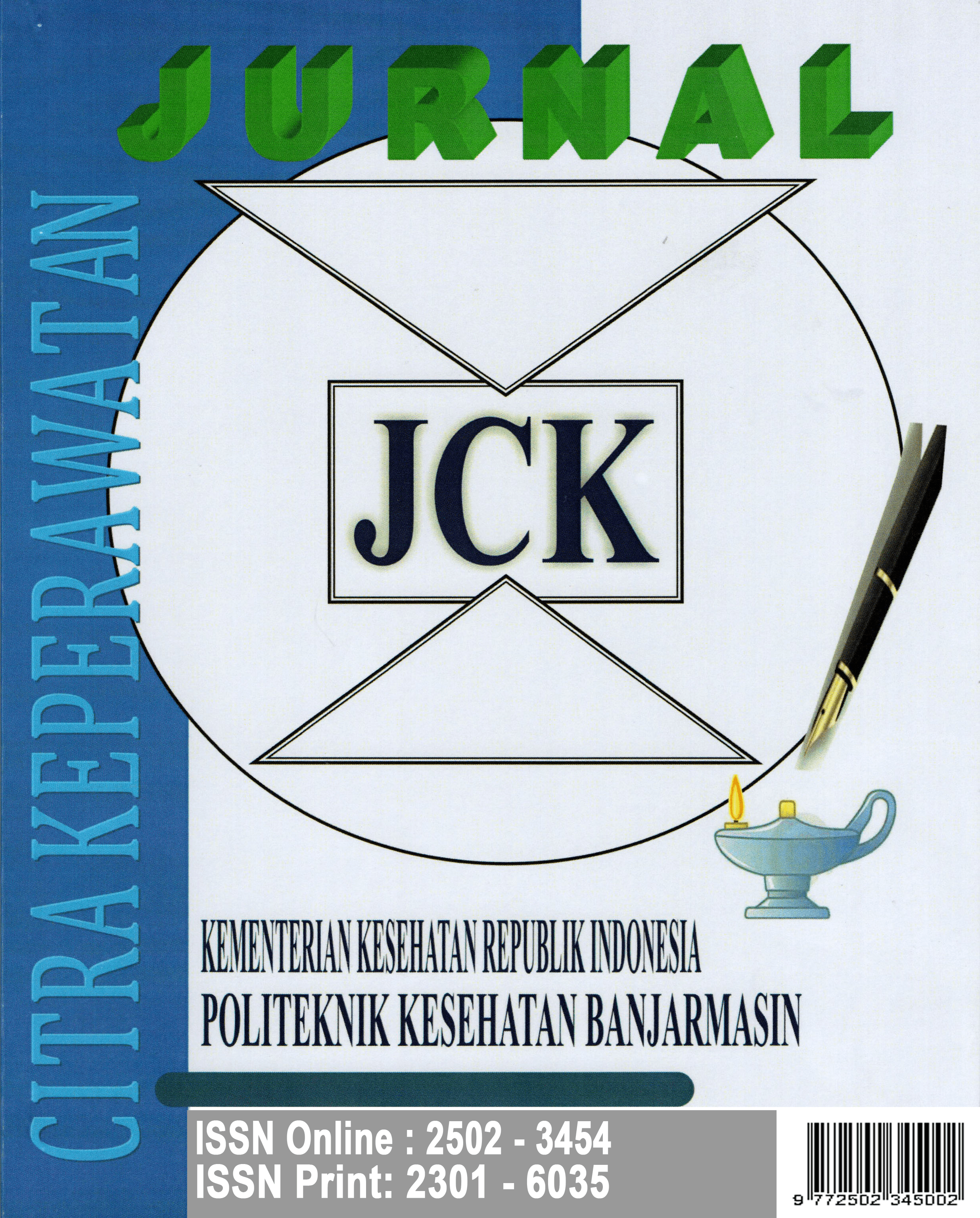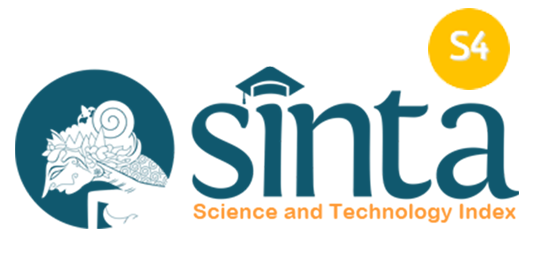Pengaruh Posisi Prone Dalam Meningkatkan Saturasi Oksigen dan Mengurangi Sesak Pada Pasien Gangguan Pernapasan: Systematic Review
Abstract
Background. Respiratory distress is one of the leading causes of morbidity and mortality, especially in vulnerable populations such as patients with chronic lung disease, pneumonia and acute respiratory distress syndrome (ARDS). One non-invasive approach that has been shown to be effective in increasing oxygen saturation and reducing shortness of breath is the prone position. This position refers to the prone sleeping position, where the patient lies face down. Objective to increase oxygen saturation and reduce shortness of breath Method A systematic review approach through searching articles tailored to the formulation of research questions with the PEO formulation in seven databases namely Scopus, ScienceDirect, Pubmed, Proquest, Sage Journals, Oxford, Wiley Results in the analysis it was found that the prone position is very effective in increasing oxygen saturation and reducing patient shortness of breath especially when combined with other pharmacological treatments. Conclusion is that the prone position performed for 12 hours/day is very effective in increasing saturation, increasing oxygenation and reducing the number of intubated patients.
References
Ahmad, A. M., Nawar, N. M., Dabess, H. M., & Gallab, M. A. (2023b). Effect of Diaphragm Manual Release versus Conventional Breathing exercises and Prone Positioning on Physical Functional Performance in Women with COVID-19. A randomized Trial. Journal of Bodywork and Movement Therapies, 35(February), 311–319. https://doi.org/10.1016/j.jbmt.2023.04.064
Chaudri, M., Parikh, S., Eliachevsky, C., Machchhar, R., Aggarwal, S., Davidovici, E., Kanukunti, A. K., & Millet, N. (2024). POSITIVE OUTCOMES WITH PRONE VENTILATION IN AN OPEN-ABDOMEN PATIENT WITH ABDOMINAL COMPARTMENT SYNDROME COMPLICATED BY ACUTE RESPIRATORY DISTRESS SYNDROME. CHEST, 166(4), A1749–A1750. https://doi.org/10.1016/J.CHEST.2024.06.1102
Guérin, C., Reignier, J., Richard, J.-C., Beuret, P., Gacouin, A., Boulain, T., Mercier, E., Badet, M., Mercat, A., Baudin, O., Clavel, M., Chatellier, D., Jaber, S., Rosselli, S., Mancebo, J., Sirodot, M., Hilbert, G., Bengler, C., Richecoeur, J., … Ayzac, L. (2015). Prone Positioning in Severe Acute Respiratory Distress Syndrome. New England Journal of Medicine, 368(23), 2159–2168. https://doi.org/10.1056/NEJMOA1214103/SUPPL_FILE/NEJMOA1214103_DISCLOSURES.PDF
Ibarra-Estrada, M., Li, J., Pavlov, I., Perez, Y., Roca, O., Tavernier, E., McNicholas, B., Vines, D., Marín-Rosales, M., Vargas-Obieta, A., García-Salcido, R., Aguirre-Díaz, S. A., López-Pulgarín, J. A., Chávez-Peña, Q., Mijangos-Méndez, J. C., Aguirre-Avalos, G., Ehrmann, S., & Laffey, J. G. (2022). Factors for success of awake prone positioning in patients with COVID-19-induced acute hypoxemic respiratory failure: analysis of a randomized controlled trial. Critical Care, 26(1), 1–13. https://doi.org/10.1186/s13054-022-03950-0
Li, W. L., Xu, N., Wei, J., Zhu, W. J., Niu, Y. Bin, Wei, J., Mei, Q., Wang, X. M., & Wang, H. (2024). Dose–response relationship between awake prone-positioning duration and PaO2/FiO2 changes and risk of disease aggravation in patients with severe COVID-19: A prospective cohort study. Australian Critical Care, xxxx. https://doi.org/10.1016/j.aucc.2024.08.002
Liu, L., Sun, Q., Zhao, H., Liu, W., Pu, X., Han, J., Yu, J., Jin, J., Chao, Y., Wang, S., Liu, Y., Wu, B., Zhu, Y., Li, Y., Chang, W., Chen, T., Xie, J., Yang, Y., Qiu, H., … Chen, T. (2024). Prolonged vs shorter awake prone positioning for COVID-19 patients with acute respiratory failure: a multicenter, randomised controlled trial. Intensive Care Medicine, 1298–1309. https://doi.org/10.1007/s00134-024-07545-x
Rollinson, T. C., McDonald, L. A., Rose, J., Eastwood, G., Costa-Pinto, R., Modra, L., Maeda, A., Bacolas, Z., Anstey, J., Bates, S., Bradley, S., Dumbrell, J., French, C., Ghosh, A., Haines, K., Haydon, T., Hodgson, C. L., Holmes, J., Leggett, N., … Bellomo, R. (2024). Neuromuscular blockade and oxygenation changes during prone positioning in COVID-19. Journal of Critical Care, 79(November 2023), 154469. https://doi.org/10.1016/j.jcrc.2023.154469
Sunarti, P. (2022). (2022). Pengaruh Posisi Prone Terhadap Saturasi Oksigen Pada Pasien Covid-19. Thorax. https://www.scribd.com/document/731918870/Skripsi-Putri-Sunarti-010118A111-S1-Keperawatan
Wang, J., Chen, C., Zhao, Z., Deng, P., Zhang, C., Zhang, Y., Lv, H., Chen, D., Xie, H., & Wang, R. (2024). Awake prone positioning and ventilation distribution as assessed by electric impedance tomography in patients with non-COVID-19 acute respiratory failure: A prospective physiology study. Journal of Intensive Medicine, July. https://doi.org/10.1016/j.jointm.2024.07.007
Copyright article owned by Jurnal Citra Keperawatan












